
by Nine Eglantine Yamamoto-Masson and Joshua Zucker-Pluda, with Jacob Kirkegaard
Mapping the Japanese forest where the spirits of suicides linger, silence reigns, and compasses fail. Programming by Seth Erickson. (Please use headphones.)
|
WHEN MOUNT FUJI ERUPTED for the second time, in 864 A.D., lava streamed down its northeastern face and into the lake at its base. The area was transformed into a volcanic plateau; a network of caves ran deep below the surface and into the lake bed. In the centuries that followed, evergreen and beech trees grew; their roots clawed the moss-covered rocks, siphoning nutrients and water. A fifteen-square-mile forest was formed: Aokigahara Jukai, the Sea of Trees. Today its trees are so numerous and densely packed that they block out the sunlight and wind. Their roots intertwine, forming gnarled nests of strands shooting in every direction. The foliage absorbs all sound. Walking through the forest, it is impossible to see the sky beyond the canopy or to determine one direction from another. The magnetic materials in the igneous rocks are said to render compasses useless.
|
|
They say that the spirits of the dead inhabit the trees, that wild dogs roam, that a dragon makes his den in one of the caverns. Azaleas, hydrangeas, and primroses bloom in spring. Abandoned backpacks, bottles, and cell phones sit on patches of lichen. Electrical tape snakes across the forest floor like Ariadne’s thread, marking the paths of those who meant to return to the outside. Glacial Apollo butterflies flutter between the branches. Thickets of disc-shaped mushrooms ring the trunks of alder trees. Bush warblers emit their indifferent song. The snow-capped peak of Mount Fuji, which has been dormant for three hundred years, looms above, invisible.
|























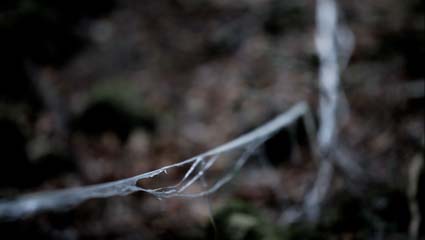

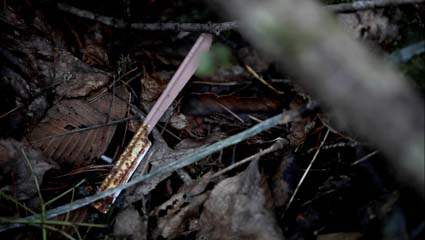

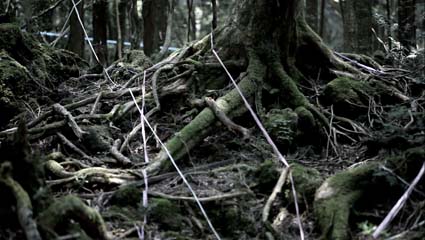
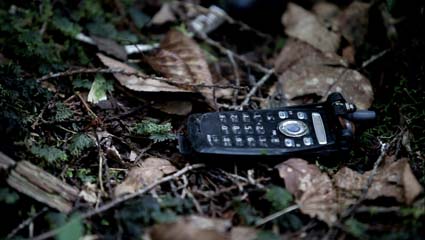



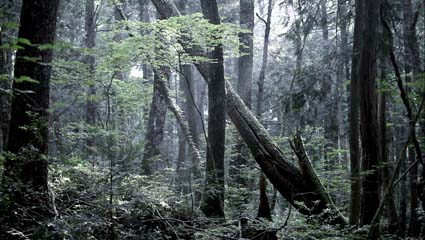

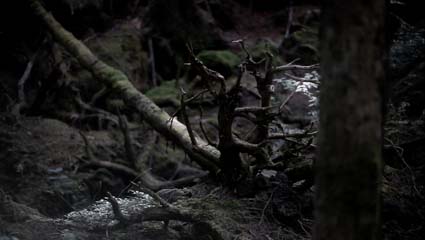



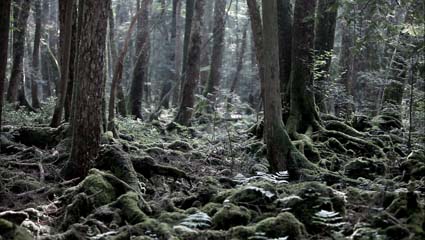


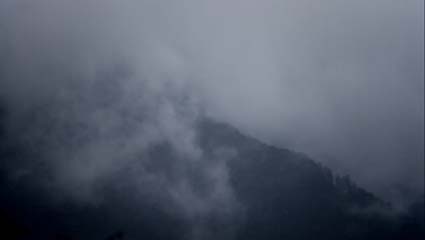




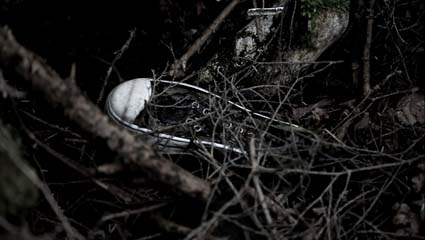



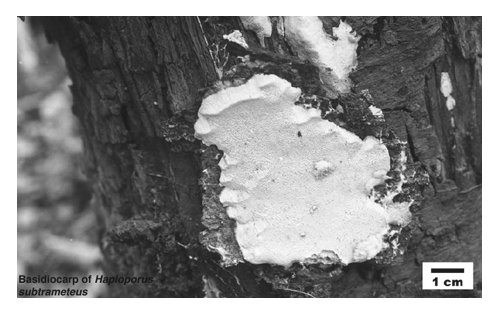












Sources
"List of Butterfly Species Observed in and Around the Aokigahara Woodland...": Kitahara, Masahiko and Maki Watanabe. "Diversity and Rarity Hotspots and Conservation of Butterfly Communities in and Around Aokigahara Woodland of Mt. Fuji, Central Japan." Ecological Research 18 (2003): 503–22. "Table 3: Methods of Suicides in Jukai": Takahashi, Yoshitomo. "Aokigahara Jukai: Suicide and Amnesia in Mt. Fuji's Black Forest." Suicide and Life-Threatening Behavior 18.2 (1988): 164–75. "Basidiocarp of Haploporus subtrameteus": Dai, Yu-Cheng and Hiroyuki Kashiwadani. "Haploporus subtrameteus (Polyporaceae, Basidiomycota) Found in Japan." Mycoscience 50.6 (2009): 452–54. Nami no Toh Cover of the novel Nami no to (Tower of Waves), by Seicho Matsumoto, originally published in 1960, this edition 2009: "In Jukai there are trees of all kinds. The roots are twisted between the lava and completely cover the forest floor. Dead trees expose their insides; withered trees lie down like snakes. It is a primitive, unexplored, virgin jungle, maintained by ancient, eternal moss. If you get lost inside this maze, your dead body will not be found." "A coalition to prevent suicides in the 'Sea of Trees'”: Kobayashi, Yuuta. Mainichi Shimbun, August 25, 2008. "Aokigahara Lava Flow": Miyamoto, Hiedeaki, Jun'ichi Haruyama, Shuichi Rokugawa, Kyosuke Onishi, Tetsuma Toshioka, and Junichi Koshinuma. "Acquisition of Ground-Penetrating Radar Data to Detect Lava Tubes—Preliminary Results on the Komoriana Cave at Fuji Volcano." Bulletin of Engineering Geology and the Environment 62.4 (2003): 281-88.
"The Sites Investigated":
Seido, Kunihiro, Suzuki Kenichi and Susumu Shuraishi. "Isozyme Variation in a Natural Population of Hinoki (Chamaecyparis obtusa) at Aokigahara, Mt. Fuji." Journal of the Japanese Forestry Society 69 (1987): 359–61.
"Topographic Survey":
Map from 2010, courtesy of the Topographical Survey Institute of Japan.
"Vegetation Map Showing the Distribution of Various Types of Forests...":
Wu, Jiann-yeh, Toshihiko Nakamura and Toshio Hamaya. "Distribution and Structure of Natural Coniferous Forests in Aokigahara, Mt.Fuji." University of Tokyo Department of Forestry Bulletin 81 (1989): 69-94.
"Interview with Prof. Nakazawa":
Conducted by Nine Eglantine Yamamoto-Masson, July 15, 2008, at the Institute for Art Anthropology, Yotsuya branch, Tokyo.
"Please Wait! Think Again!":
Source unknown. Leaflets left at the forest's main entry points.
"Case 1":
Takahashi, Yoshitomo. "Aokigahara Jukai: Suicide and Amnesia in Mt. Fuji's Black Forest." Suicide and Life-Threatening Behavior 18.2 (1988): 164–75.
"The Effect of the Media on Suicide":
Stack, Steven. "The Effect of the Media on Suicide: Evidence from Japan, 1955-1985." Suicide & Life-Threatening Behavior 26.2 (1996): 132.
"A Thousand Years to Make Forest":
Mccoll, R.W., ed. Encyclopedia of World Geography (Facts on File Library of World Geography). New York: Facts on File, 2005. 3091.
In memory of our friend Sean.